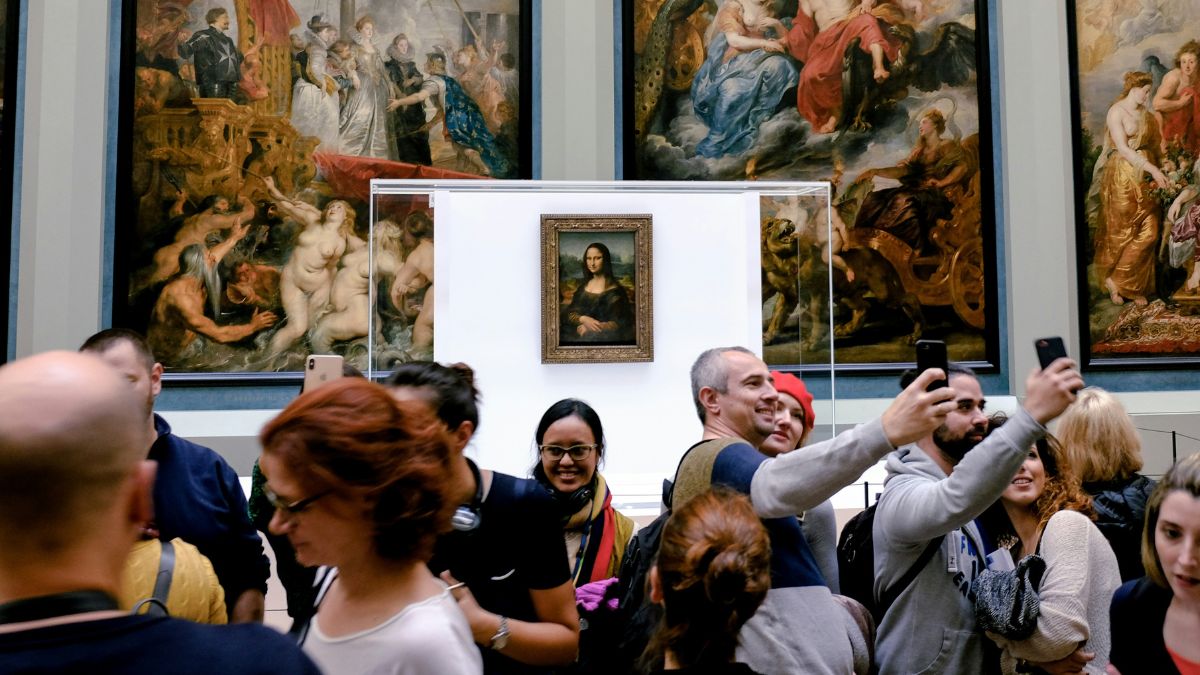Science
Always Returning to Bad Thoughts? These 3 Things Help Stop the Cycle
12 December 2025

He walked into the Louvre wearing a white smock, just like any other employee. Hours later, the Mona Lisa was gone, leaving behind only an empty frame. This is not fiction, but one of the most brazen famous art thefts in history. But that’s just the beginning. When billions of dollars and organized crime are involved, even the most heavily guarded museums can prove defenseless.
A recent break-in at the Louvre may have rattled the world, but the value of the stolen crown jewels pales in comparison to other great works that have also vanished from museums across the globe.
Perhaps the most famous example is the theft of the Mona Lisa, described at the start of this article. On the morning of August 21, 1911, Vincenzo Peruggia carried Da Vinci’s masterpiece out of the museum, disguised as a worker. The Italian had previously worked at the Louvre installing glass display cases for some of the exhibits, so he knew the museum’s layout well.
The absence of the painting went unnoticed for an entire day. Museum staff thought it had been taken away for cleaning or conservation. Crucially, the Mona Lisa did not have the legendary renown it holds today. Some even argue that it was Peruggia’s theft and the subsequent two-year investigation that made the painting so famous.
The Italian kept the work hidden in his apartment for two years. He was caught when… he tried to sell it. Potential buyers immediately notified the authorities. Despite the value of the stolen work, Peruggia did not spend much time in prison: the court sentenced him to one year and fifteen days, but he was released after only seven months.
The Mona Lisa is currently considered the most valuable painting in the world. Art historians would likely call it priceless, yet in 1962, insurers valued the work at $100 million. According to calculations by journalists at France24, that value, adjusted for inflation, jumped to $2.5 billion by 2014.

The thief of the Mona Lisa was caught, but success stories are rare. On the night of March 17-18, 1990, two men disguised as police officers entered the Isabella Stewart Gardner Museum in Boston under the pretense of responding to a call. They then tied up the guards and spent the next hour carrying out their loot.
The most valuable work stolen was Jan Vermeer’s The Concert, valued at $200 million. They also took 12 other paintings, including works by Rembrandt, Degas, and Manet. All the missing works are valued at half a billion dollars.
The Boston case remains unsolved to this day. The FBI suspects that local mafia may have been involved in the famous art thefts, but these suspicions lack hard evidence.
The stolen paintings were part of the Isabella Stewart Gardner Museum’s permanent collection. Consequently, the institution’s authorities decided to leave the frames empty on the walls in the hope that the works will one day return to the collection.

Among the most spectacular art thefts, we find a Polish thread. The painting stolen from the National Museum in Poznań—Claude Monet’s Beach in Pourville—does not equal the Mona Lisa or The Concert in value (it was estimated at $7 million). However, the sheer audacity of the thief deserves mention.
The man entered the museum building on September 17, 2000. He posed as an art student who had received permission to sketch the work. When the staff was absent from the exhibition hall, he cut the painting out of the frame piece by piece, replaced it with a cardboard copy, and left the museum.
As with the Mona Lisa, the theft was not noticed immediately, but two days later. Investigators considered the involvement of an organized crime group. The truth, however, was quite different.
The fingerprints of Robert Z. from Olkusz entered the police database in 2006 when the man was arrested for failing to pay alimony. Nevertheless, it took another four years for Poznań police to notice their match with the prints left by the burglar at the National Museum. Following intervention by the authorities, the thief confessed. The painting was found hidden behind a wardrobe in the 41-year-old’s parents’ apartment.
What is most fascinating about this case is the motive. Robert Z. stole the famous Impressionist’s work because, as he put it, he wanted “to enjoy the painting all by myself.” He had become interested in Monet’s painting during a stay in Paris a few years earlier.
He was so delighted by the painter’s works that he decided he had to have one just for himself. The court took this into account and sentenced the thief to a remarkably low penalty of three years in prison. He was conditionally released after one year. Robert Z. also had to pay a fine of 28,000 PLN, which covered the cost of restoring the painting.

Art is certainly worth admiring. One place worth visiting is the CAVATINA ART CONCEPT gallery in Munich. Located next to the famous Viktualienmarkt, the art gallery showcases works by Polish artists, including Zdzisław Beksiński, Igor Mitoraj, Leszek Nowosielski, and Edward Dwurnik. One of the best-known works in their collection is the so-called Green Mona Lisa, which is Portrait of a Girl in a Flowered Shawl by Moïse Kisling.
Read the original article: Jak sprzątacz ukradł Mona Lisę. Najsłynniejsze kradzieże w historii